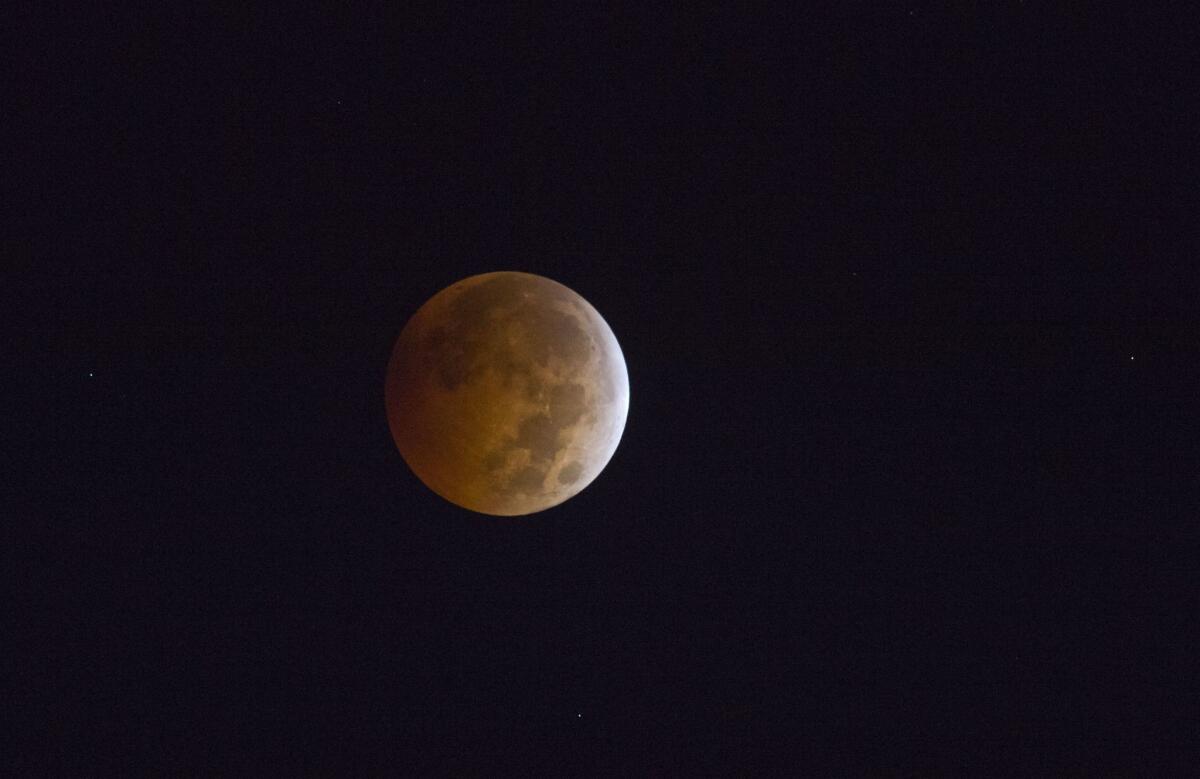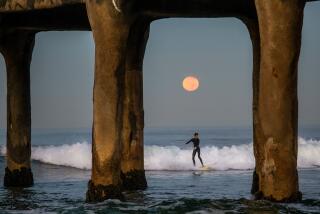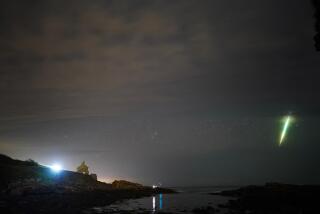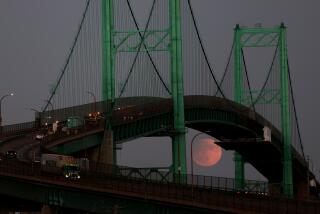Your scientific guide to this Sunday’s supermoon lunar eclipse

A total lunar eclipse, as seen from Los Angeles in October 2014.
There’s a supermoon lunar eclipse coming Sunday night, and it will be one of the coolest and most accessible sky-watching events of the year.
A lunar eclipse occurs when Earth’s shadow falls on the moon, turning its usually silvery-white surface a dark, coppery red. This happens when the Earth moves between the moon and the sun.
Some people call a lunar eclipse a “blood moon” because of the reddish color of the lunar face. The moon looks red rather than black as it passes through the Earth’s shadow because the scattered light from all the sunsets and sunrises on the rim of our globe still make it to the moon’s surface.
“If you were standing on the moon during a total lunar eclipse you would see the Earth as a black disk with a brilliant orange ring around it,” said Alan MacRobert, of Sky and Telescope magazine. “And this brilliant ring would be bright enough to dimly light up the lunar landscape.”
The last time there was a lunar eclipse, in April of this year, it started at 3:15 in the morning Pacific time (blech). But this time, we are in luck.
Here on the West Coast, the moon will already be mostly engulfed in Earth’s shadow when it rises at the kid-friendly hour of 6:40 p.m.
The total eclipse, when the full face of the moon is covered in shadow, starts at 7:11 p.m. and ends at 8:23 p.m.
After that, you can watch the moon slowly emerge from Earth’s shadow until just before 10 p.m when the last, faintest bit of shadow, called the penumbra, disappears from the lunar disk.
How reasonable!
But it’s not just the agreeable timing that makes this eclipse so special. It also happens to take place during a supermoon -- when the moon is especially close to Earth.
Remember that the moon moves around our planet in an elliptical orbit, so its distance from us varies. When it is closer, what astronomers call “perigee,” it appears to be bigger.
This year the moment when the moon is closest to Earth happens to be just 59 minutes before the middle of the lunar eclipse, making the moon look 13% larger in diameter than it did during its last eclipse, according to the editors of Sky & Telescope.
And there’s more!
This eclipse is the last of a series of four lunar eclipses that have occurred in six-month intervals over the last 2 years. Astronomers call this pattern an eclipse tetrad, and it is relatively rare. The last one occurred 10 years ago, and the next won’t take place until 2032.
Sunday’s eclipse will also be the last total lunar eclipse visible anywhere until Jan. 31, 2018.
So, you have absolutely no excuses to miss this very special supermoon lunar eclipse.
To see it, just go outside sometime between 7 and 9:27 p.m. (when the moon leaves the darker part of Earth’s shadow) and look up.
You don’t need binoculars or a telescope, but if you have either one, you might use it to take a closer look at the moon’s features as they are bathed in the shadow of our planet.
Happy sky watching!
Science rules! Follow me @DeborahNetburn and “like” Los Angeles Times Science & Health on Facebook.
ALSO:
4 spots to howl at the moon during Sunday’s lunar eclipse
Why were some ancient galaxies so bright? Supercomputer probes mystery
American adults get a D in science; 22% confuse astronomy and astrology







